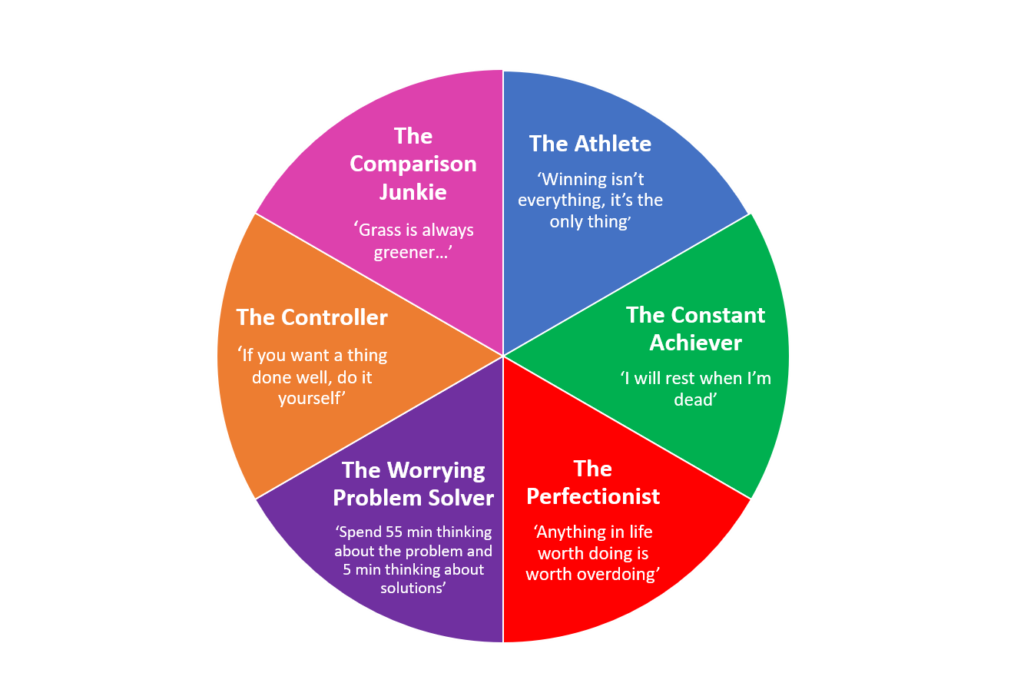Motto: ‘Anything in life worth doing is worth overdoing’.
 This achievement strategy is about doing everything to perfection, keeping your promise and never ever handing anything in half-baked. Perfectionists often respond to emails immediately so no one has to wait and tend to compensate for the shortcomings of others.
This achievement strategy is about doing everything to perfection, keeping your promise and never ever handing anything in half-baked. Perfectionists often respond to emails immediately so no one has to wait and tend to compensate for the shortcomings of others.
These overachievers scan the reactions of others to pick up any signs of irritation or disappointment so they can figure out a way to correct it. They have a clear view of what life should be like and how we should behave as individuals.
Just like their overachiever cousins – the Comparison Junkies – the Perfectionists keep track of everyone on social media and compare themselves all the time. On a bad day they can spend 60 minutes writing and rewriting a two-sentence email. Chronic procrastination could be the result of perfectionism.
Drivers and Fears:
-
-
- Fear of failure
- Fear others upsetting others
- If I make a mistake, it will lead to a catastrophe
- I am the reason others feel bad
- If I do everything right I am accepted/loved
-
How to overcome it?
-
-
- Practice realistic thinking. Because perfectionists are often very critical of themselves, one of the most effective ways to overcome perfectionism is to replace self-critical thoughts with more realistic and helpful statements. Some examples of positive realistic statements: Everyone makes mistakes! Nobody is perfect!, All I can do is my best!
- Changing perspective: Perfectionists tend to have a hard time seeing things from another person’s point of view. Start by asking yourself: How might someone else (e.g. a close friend) view this situation? What might I tell a close friend who was having similar thoughts?
- Exposure: Having a problem with perfectionism is a lot like having a “phobia” of making mistakes or being imperfect – you get paralyzed by the thought of making mistakes. Exposure is an effective method to overcome your perfectionism, here are some examples of simple exposure practice:
-
-
-
-
- Show up for an appointment 15 minutes late.
- Tell people when you are tired (or other feelings that you consider a weakness).
- Wear a piece of clothing that has a visible stain on it.
- Lose your train of thought during a presentation.
- Try a new restaurant without first researching how good it is.
-
-
If your perfectionism or other overachiever strategies hold you back and you would like to develop heathier behaviors and strategies – book a free consultation with me and we’ll take it from there.
PS: My own exposure practice while writing this post was to only read through once before publishing 🙂
Next up on the series of overachiever archetypes: The Controller.




